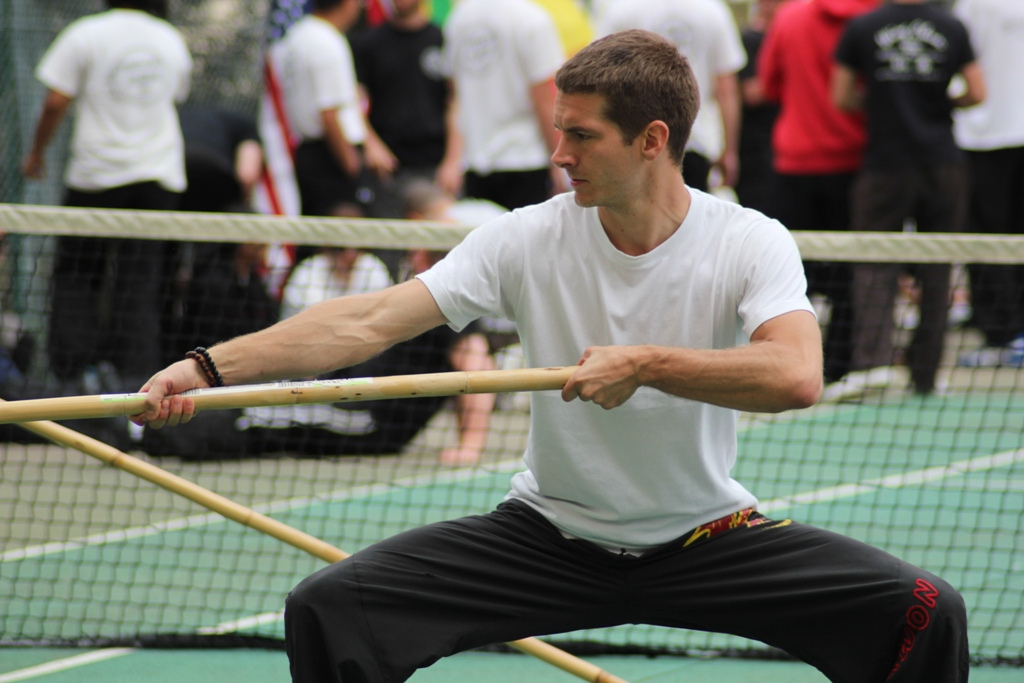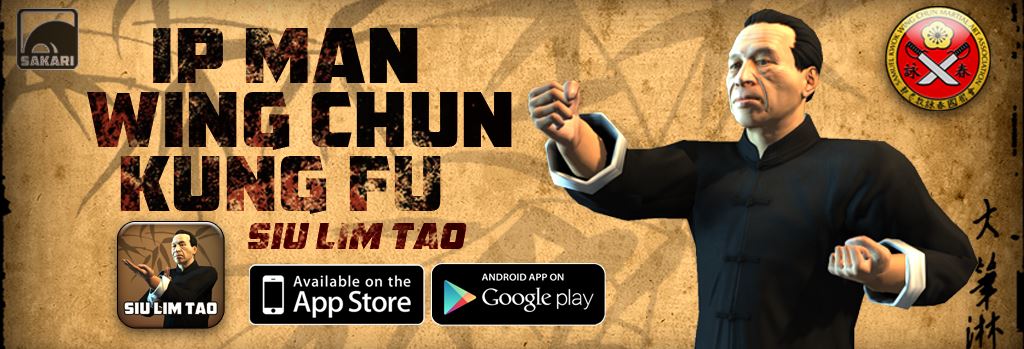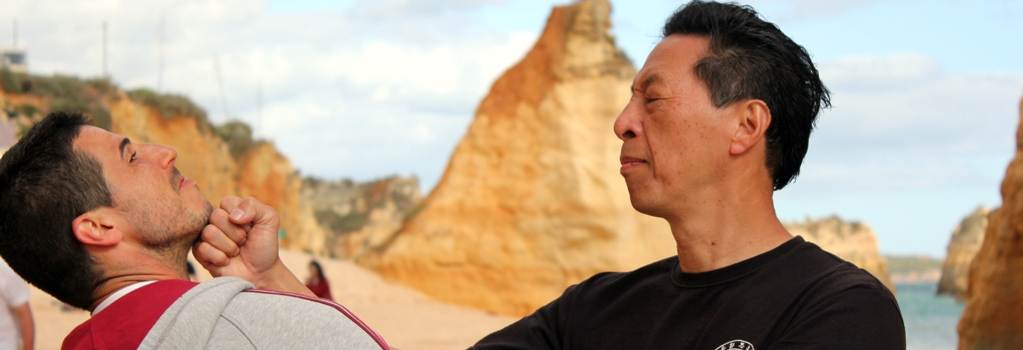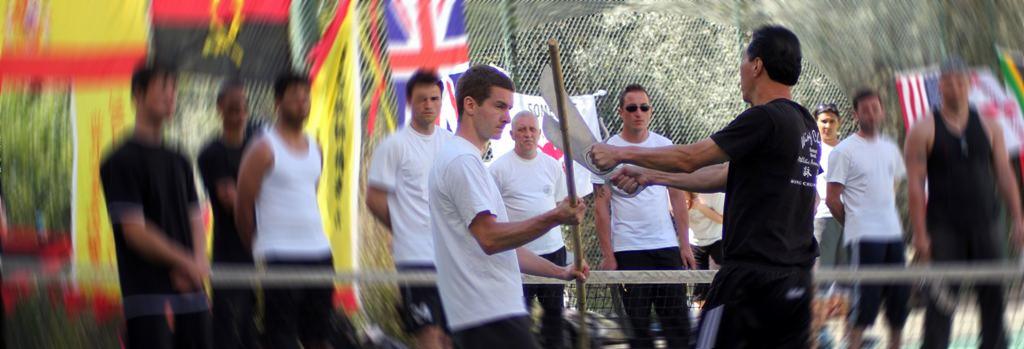Wing Chun Kung Fu long Pole Form
Article by Dan Knight added on 23 Jul 2012. Last updated on 14 Mar 2014.
Luk Dim Boon Kwun
Luk Dim Boon Kwan, [literally 6 1/2 point pole] uses the shoulder as the centerline. The power from the long bridge of the two arms is concentrated into one point and is shot out to the different positions in the form. It only has six and one half techniques. The last of which being the half, a rapid downward movement from the chest. - Ip Man & Moy Yat, Wing Chun Kuen Kuit
Six and a half point Wing Chun long pole form
as the above Kuen Kuit saying suggests Luk Dim Boon Kwun literally means six and a half point pole. The techniques in this form are generally taught as the first of the weapons forms in the Chinese martial art Wing Chun Kung Fu. The form only has six different techniques which are repeated in various directions and the half technique of dropping the pole. Therefore it is much easier to learn than the Bart Cham Dao which has well over 100 techniques.
The pole and its history
 The pole itself is sometimes called a "Dragon pole" presumably because people think it sounds cooler. It is usually around 8 or 9 foot in length. One and a half times the height of the practitioner is a general rule. It is tapered at one end so it is thinner at the top or point, compared to the base. Throughout the form the practitioner only holds the base. This is quite a big difference to other pole based styles which tend to use both ends of the weapon to spin and lash out in various directions. Because of its large size it is quite cumbersome to handle and it is thought the weapon was mainly for use on the battle field rather than one on one fighting. Theory has it the pole is for the first impact and the butterfly knives are for close fighting. Hence the half technique of dropping the pole is very important all be it a relatively easy process.
The pole itself is sometimes called a "Dragon pole" presumably because people think it sounds cooler. It is usually around 8 or 9 foot in length. One and a half times the height of the practitioner is a general rule. It is tapered at one end so it is thinner at the top or point, compared to the base. Throughout the form the practitioner only holds the base. This is quite a big difference to other pole based styles which tend to use both ends of the weapon to spin and lash out in various directions. Because of its large size it is quite cumbersome to handle and it is thought the weapon was mainly for use on the battle field rather than one on one fighting. Theory has it the pole is for the first impact and the butterfly knives are for close fighting. Hence the half technique of dropping the pole is very important all be it a relatively easy process.
History suggests the pole form probably entered the Wing Chun system as a result of people who lived and trained on river boats. A number of figures in Wing Chun's history, Leung Lan Kwai Wong Wah Bo, Leung Yee Tei, worked in the Red Junk Opera as performers. Long poles would have been common on river boats to aid with movement an handling and so it is said Leung Yee Tai knew a pole from from another martial art which was simplified with Wong Wa Bo and added into the Wing Chun system.
Goals / benefits of the form
Although the form has limited applications in today's society, there are a number of benefits from training the form.
- Strengthening the body
- Improved understanding of centreline
 The form will help the practitioner gain strength in both the legs and arms. This is because a traditional horse stance is used for most of the form putting extra pressure on the legs. Also being around 9 foot in length the practitioner will require reasonable amount of upper body strength just to hold it out straight let along train with it for long hours.
The form will help the practitioner gain strength in both the legs and arms. This is because a traditional horse stance is used for most of the form putting extra pressure on the legs. Also being around 9 foot in length the practitioner will require reasonable amount of upper body strength just to hold it out straight let along train with it for long hours.
The form will also help improve coordination and it will help understand the principles of Wing Chun better. For instance being a centimeter off of the centreline with your guard would be hard to notice, however at the end of the 9 foot pole it becomes obvious. Therefore training the pole will help the practitioner identify subtle mistakes in his technique which applies to both empty hand and weapon techniques.
Wing Chun Pole Form video by master Kwok
The following video shows master kwok perfomingt he Lok Dim Boon Kwan or pole form on stage.
Tags for this article:
Pole FormFormsWeaponsSam KwokLuk Dim Boon Kwan



